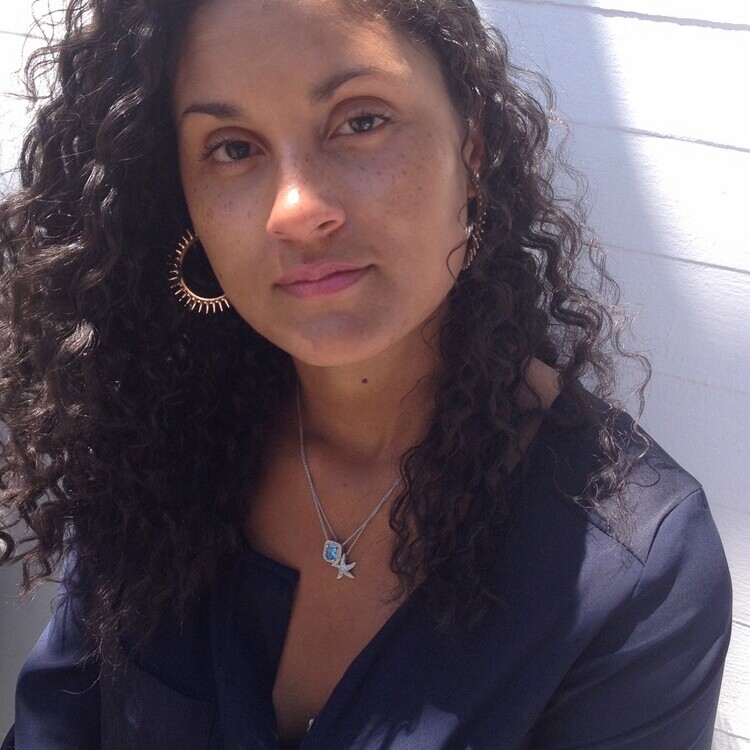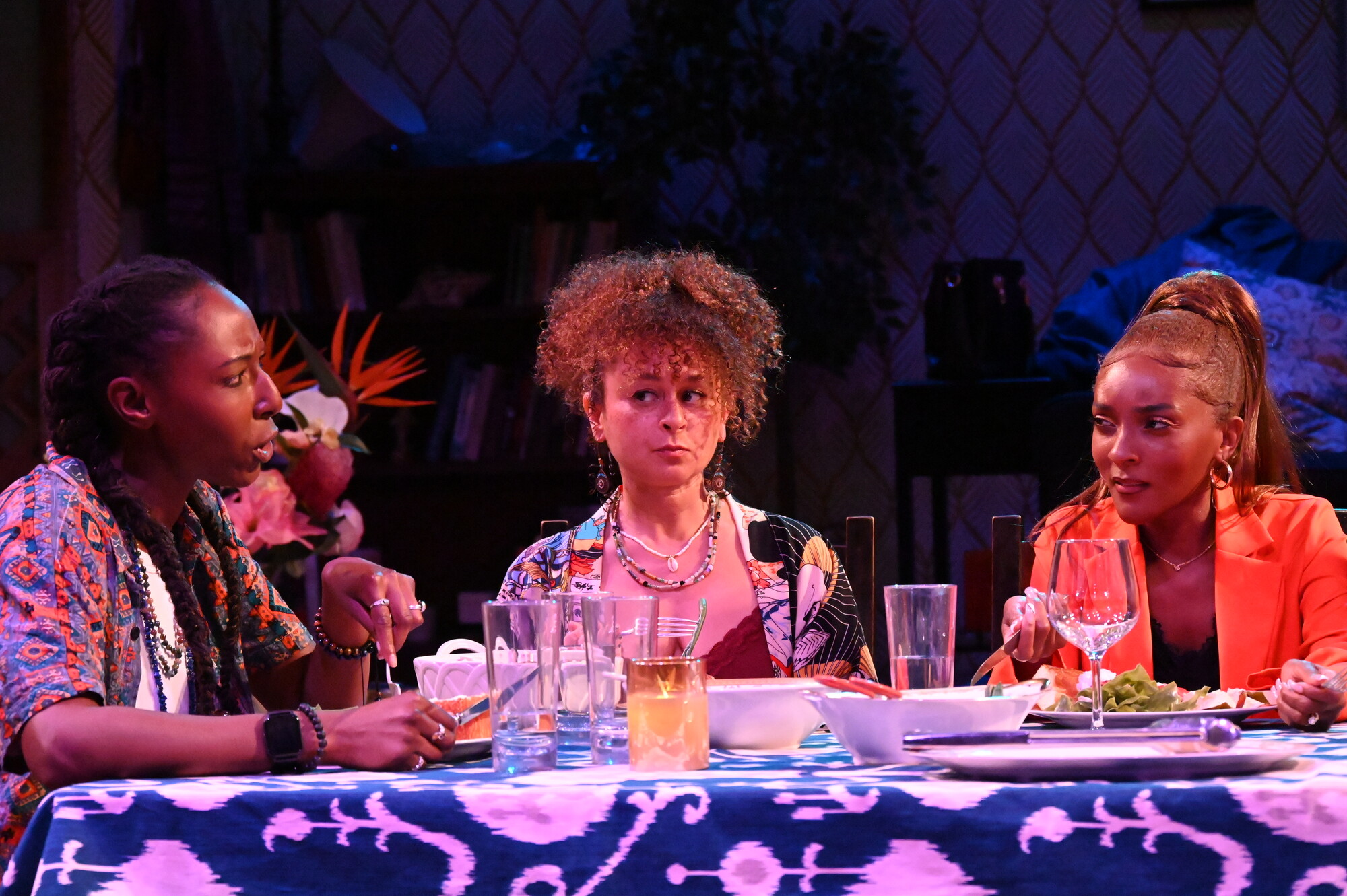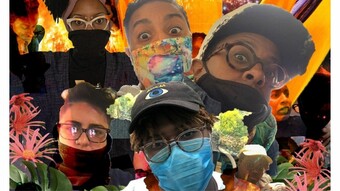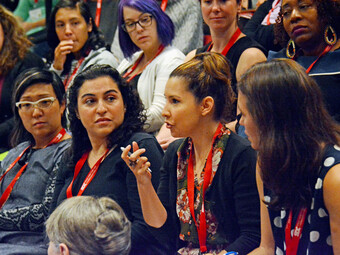When AeJay Mitchell was hired as a “creative culture consultant” on the production of Star Finch’s play Josephine’s Feast at the Magic Theatre in San Francisco, it was the first time Finch had ever heard of the role. She sat down with Mitchell to discuss the deep intention that fuels this sort of consultant work, how it differs in practice from the theoretical language of Equity, Diversity, and Inclusion (EDI), and why caring for artists shouldn’t feel like an impossible task.
Star Finch: First off—congrats on the Marin Shakespeare Company Artistic Associate residency!
AeJay Mitchell: Thank you. Yes, it’s exciting. I've been working with Jon Tracy as a collaborator and thought partner for some time, and one of the conversations we had years ago was about the intersection of theatrical gatekeeping and the positioning of Shakespeare as a theatrical deity. We discussed how there are at least as many, if not more, Shakespeare festivals as there are states in the so-called “United” States as well as productions and adaptations in hundreds of season announcements yearly.
So in this residency, I am invited to challenge how US theatre positions Shakespearean dogma. I am able to ask how we might usurp the “Great White Bard’s” power, as so labeled by the brilliant Farah Karim-Cooper, in order to present work that speaks to contemporary themes and deeply diverse voices. How could a thicc, queer, Black, enby person like myself and others be seen within a lens of a radical Shakespearean legacy? It's not upholding this one person's voice, but maybe upholding what he might have aspired to, which is this continuation of innovation. We want the playwrights of now to take charge and drive us forward, as Shakespeare and his contemporaries did in his time.
Star: Word–I’m all about a forward drive! I want us to dig into what exactly a cultural consultant does in a room, but first I'd love to know a little more about how you landed in this role. You've worked as an actor, a choreographer, a director, a teacher… Did those paths assist you in holding the role of a creative culture consultant? Or is it its own thing altogether?
We started to dream about ways in which artists can shout their dreams—dreams of community, dreams of comfort, dreams of liberation, and dreams of brave artistry—into their rehearsal processes.
AeJay: Yes, I believe my work in education has definitely equipped me for the role of consultant. As an educator, you are often thrown into rooms with a wide range of student backgrounds and experiences—from students who have access to generational wealth to students who question daily from where their next meal might come. From this divergence of access, you also have students who come in with personal training under their belt, and some students whose first access point to theatre was in my classroom. So my continued challenge was to consider how to bring pedagogical styles and practices that I really loved—that I found meaningful and helpful—and dissect them to serve a population with variant needs.
I was always working to make sure that my acting studio and dramaturgical labs left a lot of room for each individual’s creative journey while attempting to decrease focus on product-based assessment of what “must be” and “should be” to a process-based assessment on what “could be.” This approach helped me to avoid the harmful trappings of product-based, capitalist, white supremacist urgency culture that is in conflict with creative liberation. I think a rehearsal room can operate in this way as well, even within the realities of an opening night and fiscal responsibilities.
And so, yeah, I was having a version of this conversation over dinner and drinks with Sean San Jose, the new artistic director at Magic Theatre in San Francisco, centering on how I look to hold and be held within an artistic space. As we were challenging terms such as safe space and community agreements based on “don’ts,” we started to dream about ways in which artists can shout their dreams—dreams of community, dreams of comfort, dreams of liberation, and dreams of brave artistry—into their rehearsal processes. As educators often hold, carve pathways, and provide tangible resources for the big dreams of their students, I work to do the same for artists in process of birthing a new work. That's the connection’s trajectory, I would say.
Star: Magic Theatre initially described the role to me as a different approach to EDI. And EDI is one of those terms that makes me automatically roll my eyes into the back of my head. Because—
AeJay: Mm-hmm. Yep. Yep. Yep.
Star: It tends to mean: diversity and inclusion within a white supremacy framework, or basically adding ethnic garnish to the existing slop. But I experienced you as more like a river in the room. You were a fluid space held for the actors—a river where they could cleanse themselves through conversation or cross from one bank to the other with you, which was a beautiful thing to both witness and have connected to the production of Josephine’s Feast. I'm curious to know how you define the role for yourself and what your own experience was like during production.
















Comments
The article is just the start of the conversation—we want to know what you think about this subject, too! HowlRound is a space for knowledge-sharing, and we welcome spirited, thoughtful, and on-topic dialogue. Find our full comments policy here